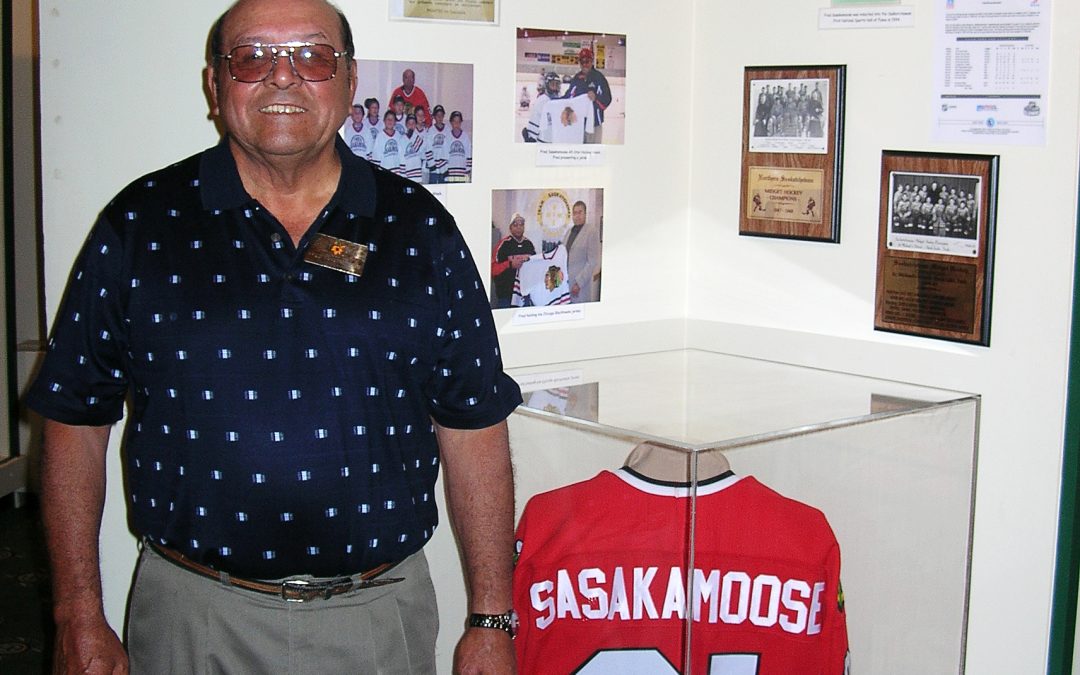Indigenous hockey legend Fred Sasakamoose’s life was honoured this weekend as part of a funeral service in his home community of the Ahtahkakoop Cree Nation.
Sasakamoose, one of the first Indigenous players to make it to the NHL, died last month after a short battle with COVID-19.
He was 86-year-old.
Although his time in the pros was very short, Sasakamoose played only a handful of games for the Chicago Blackhawks in the mid-1950’s, his influence in sport and community work spanned decades.
He served as a role model and mentor to countless Indigenous young athletes, was elected a number of times as chief of his home community and was well known as an ambassador for the game of hockey and its connection to First Nations people.
Sasakamoose was also the recipient of numerous awards and honours including the Order of Canada and is a member of the Saskatchewan Sports Hall of Fame.
Because of COVID-19, attendance at the Saturday funeral was capped at 30 people but several hundred more watched the event through live streaming on Facebook.
Federation of Sovereign Indigenous Nations Chief Bobby Cameron was the master of ceremonies.
“Words can’t do him justice fort the life he lived,” he said. “The memories he’s made and the the experiences he had for 86 years.”
Ahtahkakoop Cree Nation Chief Larry Ahenakew was also one of the keynote speakers at the funeral.
“Media have been calling me and asking how I remember Fred,” he said. “I think it’s his generosity to the hockey world. He never asked for much (for speaking engagements) – a room, a flight, a meal – that s all he asked for.”
Prime Minister Justin Trudeau, Assembly of First Nations National Chief Perry Bellegarde, NHL Commissioner Gary Bettman and former Philadelphia Flyers’ great and Hockey Hall of Famer Reggie Leach were among those who gave video tributes at the service.
Sasakamoose learned to play hockey at St. Michael’s Residential School in Duck Lake before moving on to play Junior hockey with the Moose Jaw Canucks of the Western Canadian Junior Hockey League where he would become a star.
He played 11 games for the Blackhawks in the 1953 and 1954 seasons.
With files from Michael Joel-Hansen
